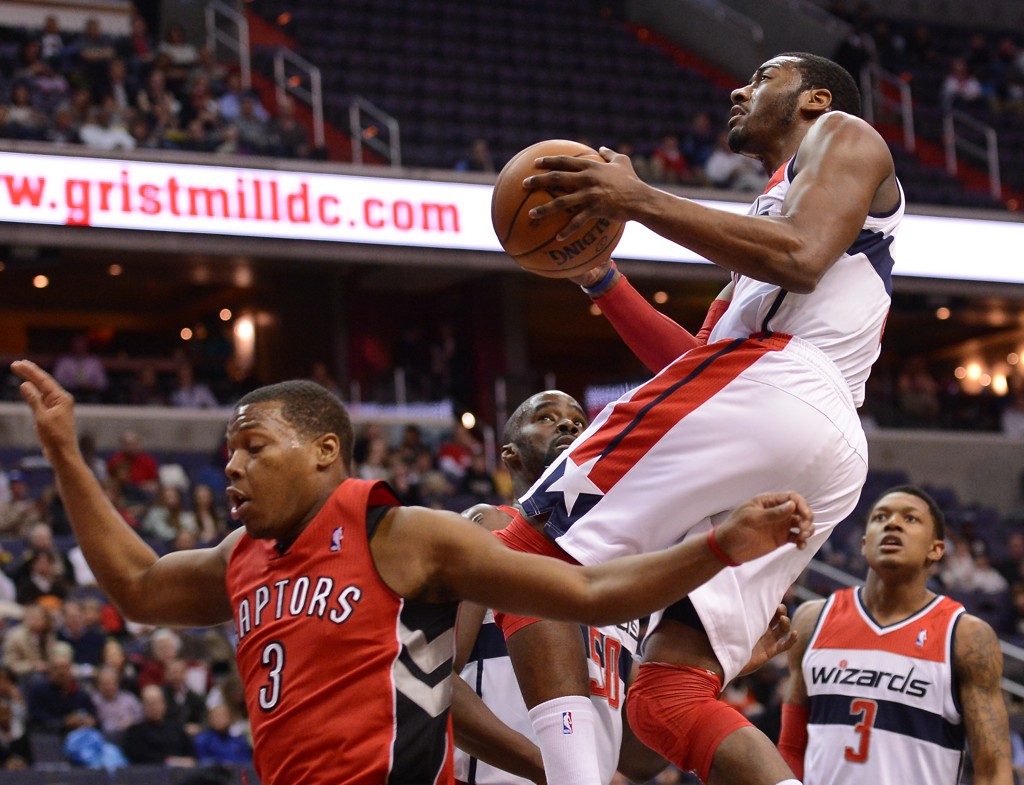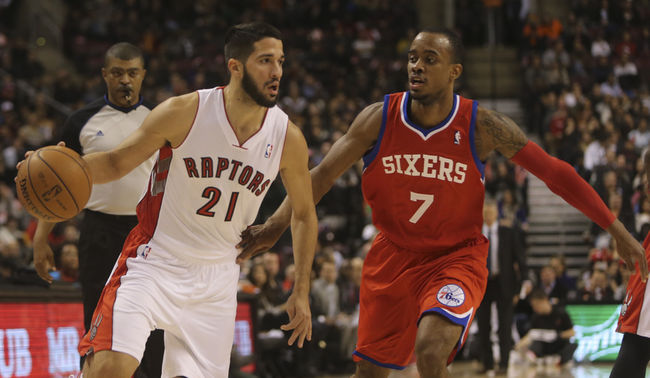Biology and basketball go together like fungi and alga.
Lichens are one of nature’s most fascinating creatures.
The term lichen applies to a classification of composite organisms whose very survival is predicated on symbiosis — or teamwork, if you will. Each lichen is composed of a fungus, and a photosynthetic partner, which is typically green alga. The arrangement is simple — the fungus surrounds the alga, and helps retain water and in exchange, the alga provides the fungus with oxygen and sugar. This quaint arrangement makes the whole far more sustainable, and more resilient than it’s parts, thus allowing lichen to flourish in the world’s most inhospitable environments. Through symbiosis, the fungus and its pairing alga forms more than just lichen, it forms one of nature’s hardiest pairings.
Which in a small way reminds me of Demar and Amir.
Over the past four seasons, Demar Derozan and Amir Johnson have shared the court for a whopping 5679 minutes, or roughly 3.9 days. Amir has overseen the entirety of Demar’s NBA career, but despite being the older — and therefore craftier — player, the duo have grown together as teammates, and they have even developed something of a pet play.
The play — forthwith referred to as “sleight of hand” — is simple, yet effective, because it plays on their strengths.
The action starts with Amir and Derozan lined up on the same side of the court. The ball-handler (usually Lowry) initiates the play by feeding the ball to Amir in either the high, or the mid-post. Once Amir catches the ball, he turns to set a screen for Derozan, who curls around him awaiting a hand-off. After the basketball exchanges ownership, Amir moves to fully position himself for a drag-screen. He first ensures that Derozan has space to operate, before rolling to the basket. The resulting action is similar to a pick-and-roll, only Derozan is able to catch the ball with forward momentum inside of the arc. It looks something like the following:
Sleight of hand is an effective play for a number of reasons. First and foremost, the play allows Derozan to catch the ball with momentum towards the basket, which frees up the option for Demar to drive into the paint, where he is most effective. Second, the play effective because Amir Johnson is one of the best screen-setters in the NBA. While no statistics are tallied on this specific play, it’s worth noting that Demar Derozan ranks 2nd in the NBA at 1.27 points per hand-off, and over half of Derozan’s 40 made baskets via the hand-off have been assisted by Johnson.
Like most successful sets, sleight of hand has built-in options to counter varying defensive tactics. The example above can be classified as option one, where Amir sets up in the mid-post. This iteration allows the option for Amir to slip behind the defense, and to short-roll to the basket. If the screen successfully barters Derozan some separation from his defender, Amir’s defender is forced to step up to contain Derozan’s penetration via a trap. However, if he steps up too far — as Tim Duncan does in the subsequent clip — Demar can make the easy pocket pass to Amir under the basket.
In option two, Amir hands Derozan the ball, but instead of setting a drag screen and heading towards the net, he stays high and positions himself for a potential kickout. This dissuades the defense from committing two defenders to Derozan’s drive, as the option exists for him to kick it out to an open Amir. Typically, that’s a trade-off that most defenses would happily accept, but in the case of conservative defensive schemes weary of aggressive double teams, or when defenders fail to recognize the play like Marcin Gortat in the subsequent clip, Amir’s presence helps open up space for Derozan.
However, the play loses some effectiveness when Johnson is out of the picture. Because of its simplicity, Coach Dwane Casey occasionally opts to run sleight of hand for Derozan while he’s on the court with the bench unit. However, this often isn’t as effective because the substitute player cannot replicate Johnson’s subtle timing and adaptive skillset.
For example, the play is sometimes run for Derozan and Patterson, but 2Pat isn’t nearly as good of a screener, nor as reliable of a finisher. The second part is key, because failing to create separation allows defenses to ICE the play — much like they would as if it were a pick-and-roll — which impedes Demar’s path to the paint.
In the clip below, Patterson breaks into the dribble hand-off, but his screen for Demar is very soft, and by setting it near the three-point line, he invites the Cavalier defense to momentarily ICE Derozan. To his credit, Demar recognizes this and pulls back towards the middle, but he’s unable to shake the surprisingly nimble Tristan Thompson and misses his jump-shot.
And that’s not to slag Patterson or any other players substituted into the equation — Amir and Derozan just have a level of familiarity with each others’ tendencies that only comes with experience. Amir knows Derozan’s timing, and Derozan is astutely aware of Amir’s movements. It’s an incredibly simple, but carefully orchestrated play that succeeds because of the players involved. By drawing on the strengths of both players — screen setting for Amir, attacking the basket for Demar — the sleight of hand allows two long-time teammates to flourish.
Which…is akin to lichen? Nope? Okay.



